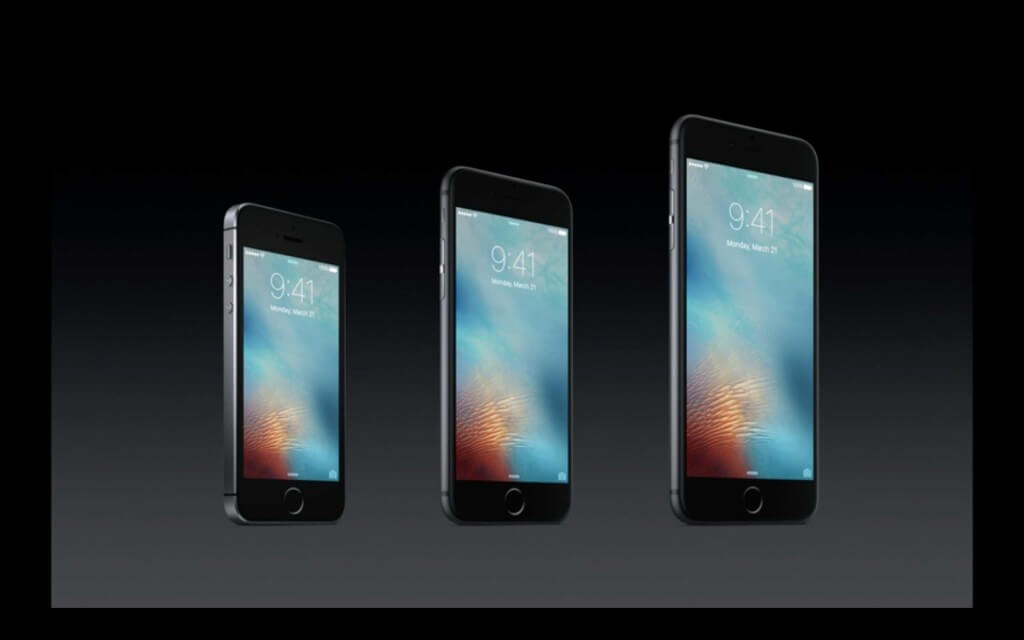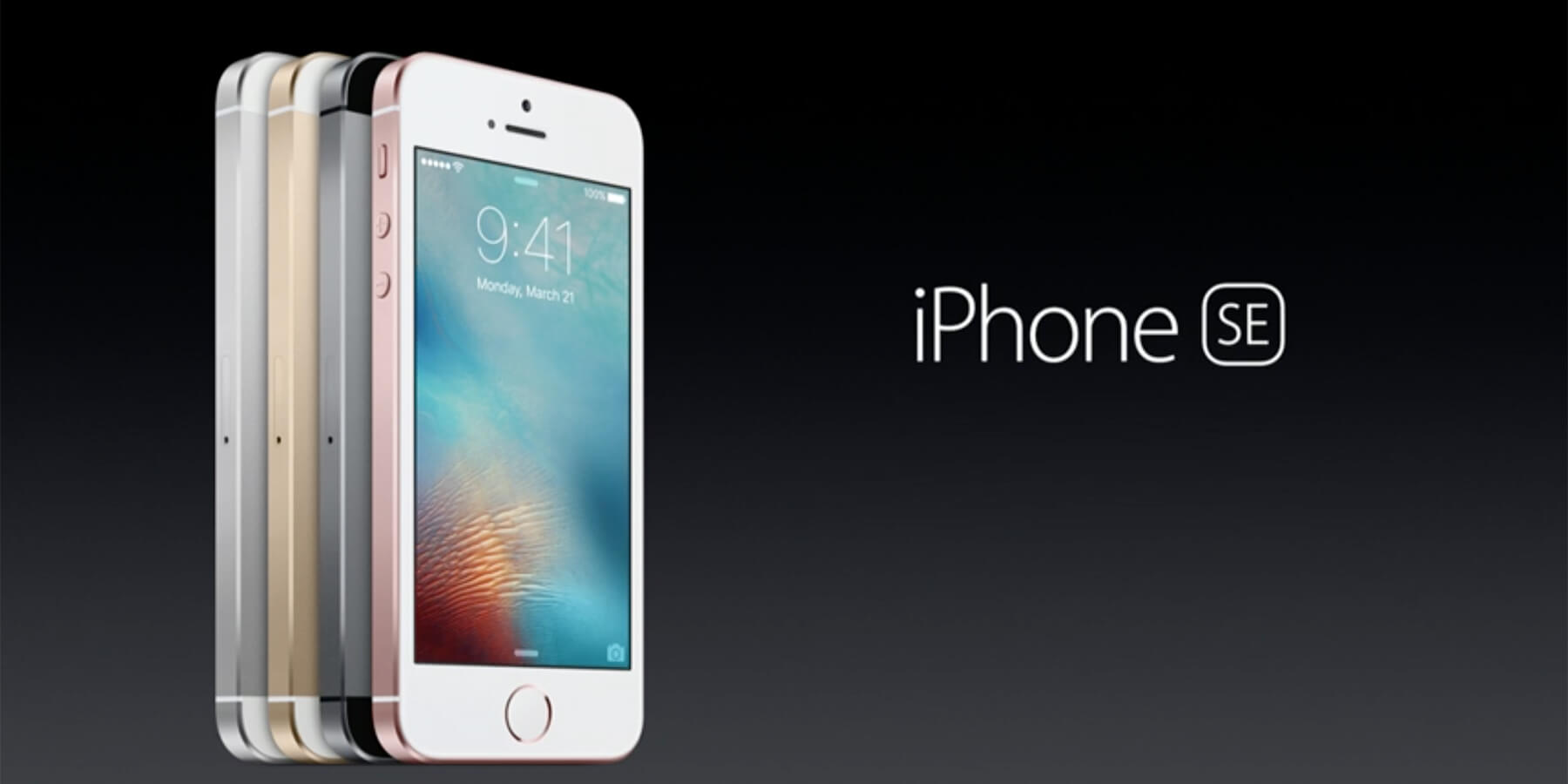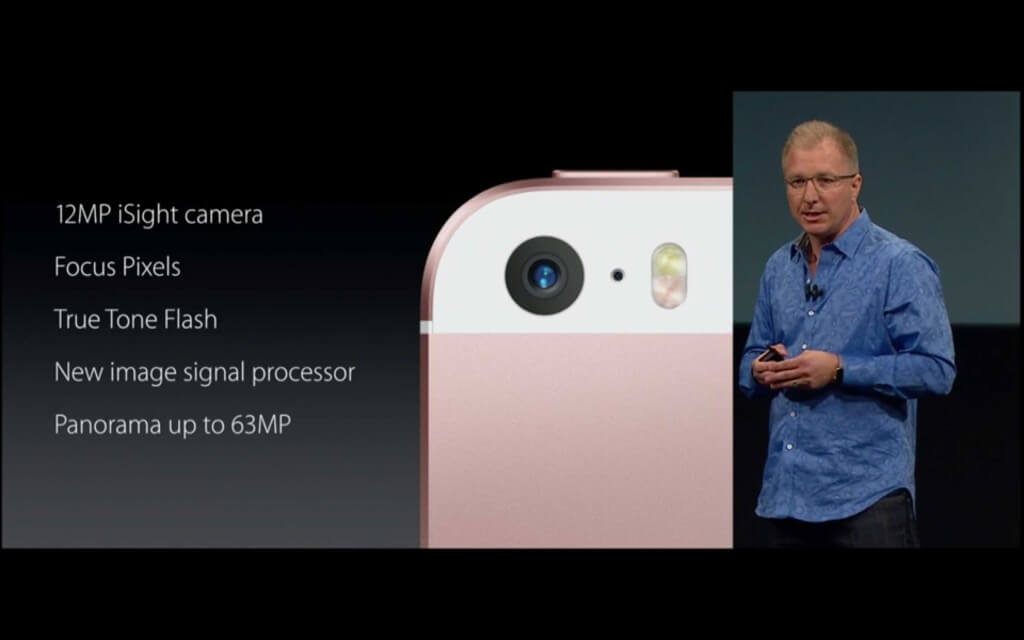Apple has unveiled its latest edition of the iPhone – the iPhone SE. Intended to be its latest entry-level offering, the SE follows a similar form factor to the iPhone 5s. It retains the model’s 4-inch screen and is the first model to do so since 2013.
The iPhone SE will include the same A9 processor as the iPhone 6s, offering twice the speed of the 5s and triple the graphical performance. It also boasts better battery life, Apple’s latest 12MP camera (that means 4k video and Live Photos), plus the NFC chip required to use Apple Pay.
The iPhone SE is Apple’s response to customers that wish to continue using smaller devices. Though the smartphone industry as a whole has evolved to larger screens, there’s no arguing with the 30 million 4-inch iPhones Apple sold in 2015 alone.

The iPhone SE takes its place alongside the iPhone 6s & 6s Plus as a key fixture in the iPhone product line
Greg Joswiak, VP of product marketing for Apple, said at unveiling this week: “Some people simply love smaller phones. And the 4-inch phone is often their first iPhone. Some people asked and pleaded with us. So we’re calling it the iPhone SE. Our most powerful 4-inch phone ever.”
So, what does SE stand for?
According to journalist Jason Cipriani, it stands for “Special Edition”. Cipriani said he was told by Apple’s senior vice president of worldwide marketing Phil Schiller was the SE actually stood for.
It seems sensible for Apple to have this model standalone from its flagship 4.7 and 5.5-inch device, allowing those models to continue in elevation. Matching those devices power with a historical design certainly indicates a new product line as opposed to attempting to slot it in somewhere within the existing number scheme.
Does a budget price = budget features?
Yes and no. But mostly no. It might look and be priced at a point similar to an iPhone 5s, but for all intents and purposes, this is an iPhone 6s-era phone and as a result contains most of the features you’ll find in Apple’s latest smartphones.
This includes:
- A9 chip – this is what makes it the most powerful 4-inch device Apple has made. It’s the same chip that’s in the iPhone 6s and is the powerhouse behind its fast speed and sharp graphics. It makes the iPhone SE twice as fast as the iPhone 5s. Graphically, its performance is 3x that of the 5s.
- 12MP camera – again, the SE will contain the same iSight camera currently residing in the iPhone 6s. This includes shooting 4k video, and Live Photos support. It also has the same upgrades to the FaceTime HD camera – including a Retina Flash so you can take night-time selfies.
- Touch ID/NFC chip – another key feature that’s not been seen on one of Apple’s 4-inch handsets before. iPhone SE owners will be able to take advantage of Apple Pay using the device’s Touch ID and NFC chip to make payments in stores and online.
So what doesn’t it have? The key functionality missing here is 3D Touch. The iPhone 6s’ flagship new feature, which uses ‘peek and pop‘ gestures to give a deeper level of control over apps, ranging from email or image previews to quick launch actions – for example, pressing down on a home screen icon like the Camera app gives you an option to take a selfie. This would then open the front camera ready for you to take your picture.
In some ways it seems strange that Apple isn’t including this feature in new devices going forward after it appeared first in its new range of MacBooks in 2015, and then in the 6s and 6s Plus. However, its absence is most likely intended to keep costs low. There could also be design issues in implementing the technology into the older 5s-style design.
Either way, it’s unlikely to be a deal-breaker for those wishing to use a smaller device.
Pricing & availability
Pre-orders for the iPhone SE start on March 24, with release set for March 31.
The device is priced from $399 / £359 for 16GB of storage or $499 / £439 for 64GB of storage.


